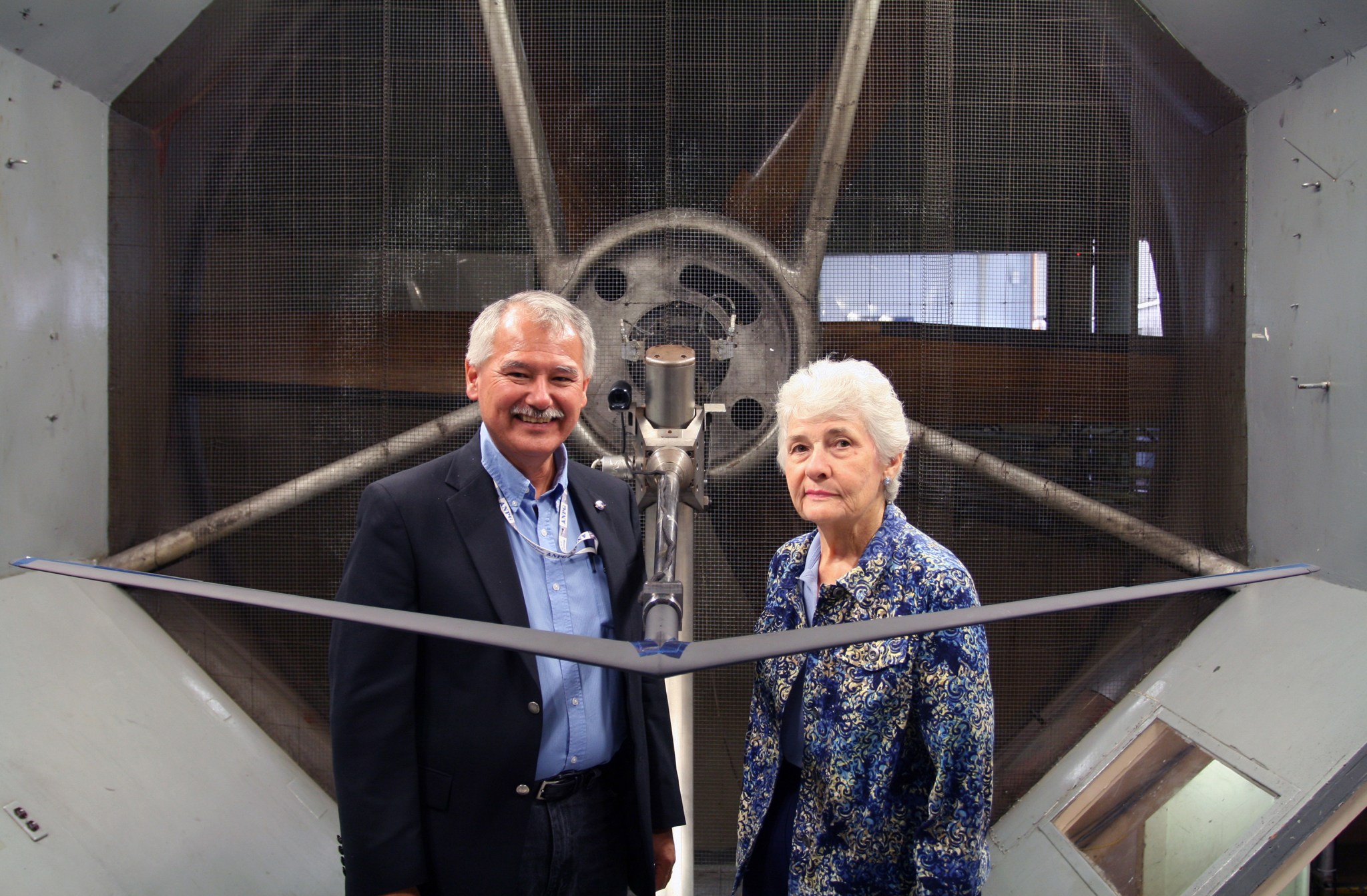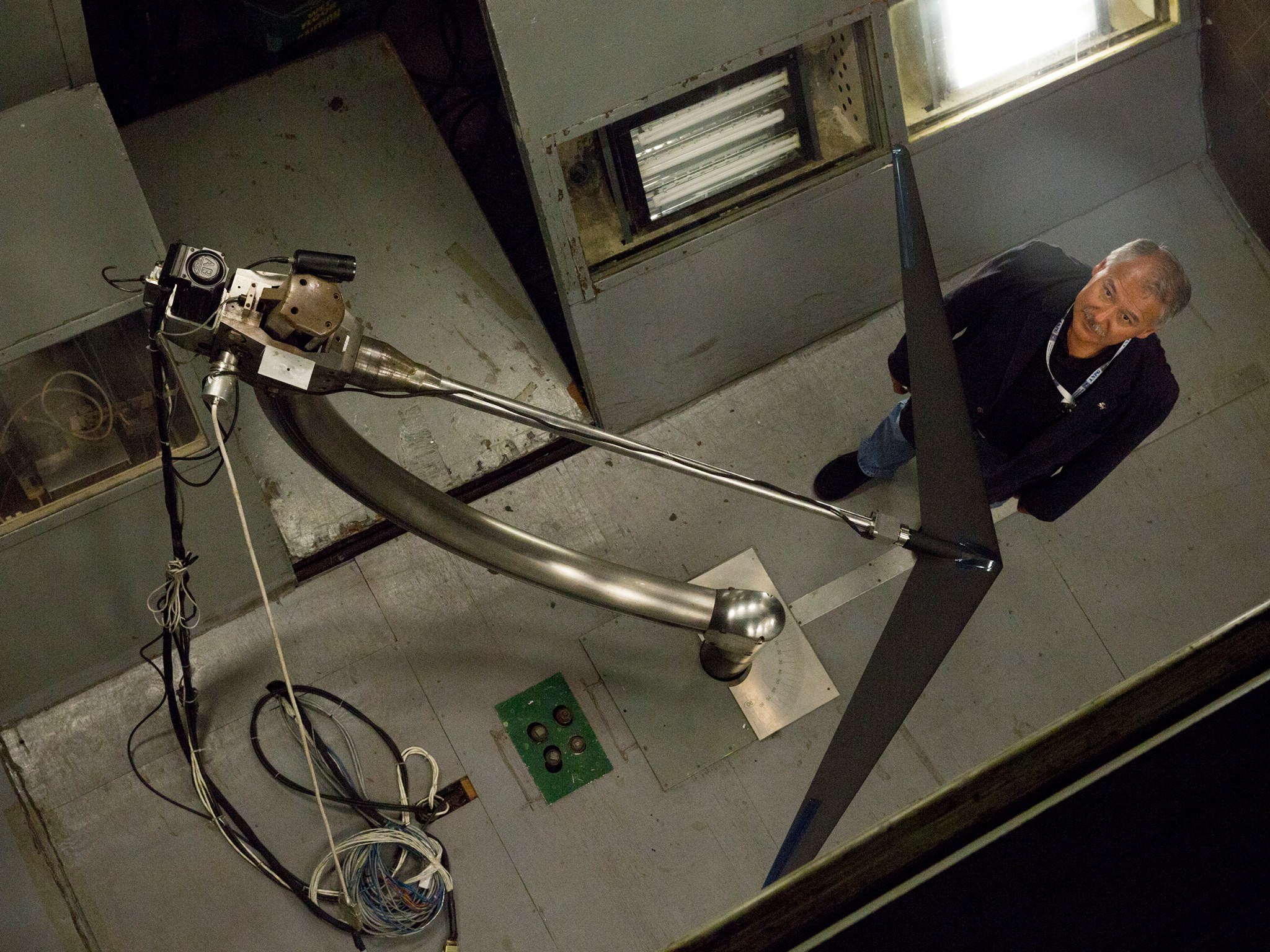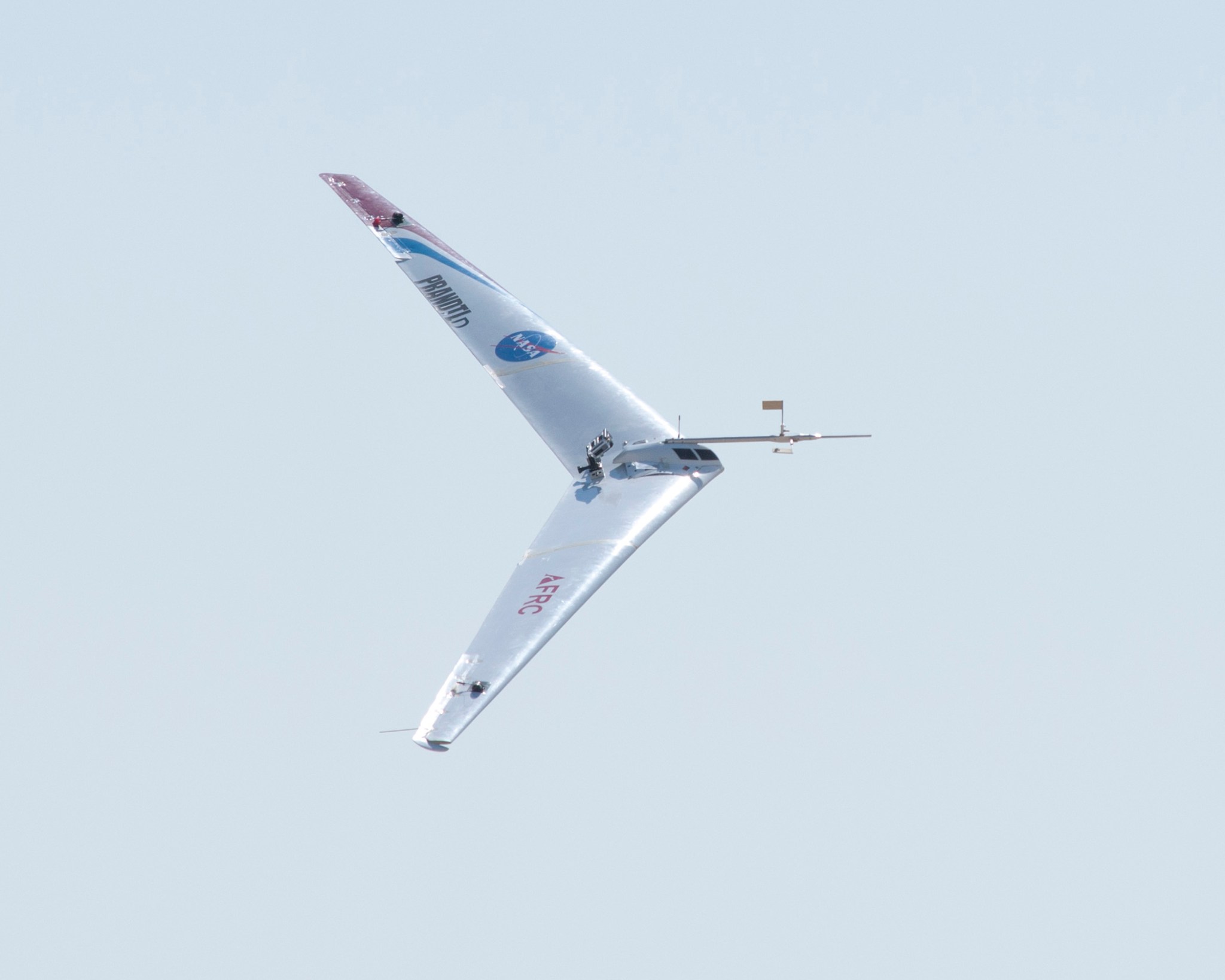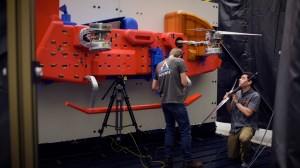Researchers at two NASA aeronautics centers validated elements of a wing design that could greatly improve the efficiency of future aircraft.
NASA Armstrong Flight Research Center on Edwards Air Force Base in California and Langley Research Center in Hampton, Virginia, collaborated on a series of thorough wind tunnel tests that recently took place. Researchers investigated an aircraft aerodynamic wing scheme based on work from the 1930s that features a literal and metaphorical twist on conventional wing calculations.
Al Bowers, NASA Armstrong chief scientist and Preliminary Research Aerodynamic Design to Lower Drag or Prandtl-d, program manager, has been researching the wing configuration with increasingly complex boomerang shaped, subscale aircraft. This summer he worked with groups of NASA Armstrong student interns on a related delta-wing-shaped aircraft with wing design twist principles that could one day lead to a Mars airplane.
The shape chosen for the Langley-developed Prandtl-d wind tunnel model is an amalgamation of the Prandtl-d vehicles flown at NASA Armstrong. A third such vehicle is set to have a first flight later this year.
The wind tunnel data included the unexpected.
“The wing is very stable and well behaved,” Bowers said. “Some of this we knew already, but there were parts that were a little surprising, like how the wing maintains control even when it is completely stalled. These things are hard to know from intuition, it’s only having the data in hand that tells us about the real behavior.”
The wind tunnel research also added key information.
“The flight data is very limited, but it’s the real data,” Bowers said. “We can only surmise the aero characteristics in a very piecewise approximate way. The wind tunnel data show all the individual pieces that go into that data set. So we can see the nonlinear behaviors and model those, so the individual pieces can be assembled to the larger characteristics seen in flight. And then comparing the results from the wind tunnel data set to the flight data is the real proof if we’ve captured the characteristics well or not.”
Coupled with the flight data, Bowers said the next step is clear.
“We’re going to assemble a simulation database of the wing from this (wind tunnel data),” he said. “Then we will be able to assemble a full six-degree-of-freedom simulation to fly.”
No further wind tunnel tests are planned, but some of the next flight tests will capture the aerodynamic pressures over the wing.
“So far we do not have that piece of the puzzle,” Bowers said. “We have inferred that we have the correct flow because of the flight behavior of the wing.”
The Armstrong and Langley partnership has been in the planning stages for some time. The collaboration took a big step forward earlier this year when Bowers’ perseverance resulted in NASA’s Aeronautics Research Mission Directorate agreeing to provide funding for Langley to build the wind tunnel model using composite materials, including polycarbonate, and test it in the center’s 12-Foot, Low-Speed Wind Tunnel operated by the Flight Dynamics Branch.
Bowers and Langley senior research engineer Sue Grafton previously worked together on such projects as the highly successful F-18 High Alpha Research Vehicle, or HARV. During the nine-year project that investigated a new flight control system at high angles of attack, the two centers compared flight and wind tunnel data. Prandtl-d was an opportunity to partner again.
“It was great working with Langley engineers again,” Bowers said. “They are brilliant professionals. We deeply appreciate the support we have from ARMD and Langley in making this happen.”
Based on information from the first two test flight vehicles, Langley engineers designed and built a six-foot-span wind tunnel model, Grafton explained. Some modifications were needed at the center of the wing to accommodate the addition of strain gauges and properly balance the model to accurately collect forces and moments data.
The testing, particularly the smoke portions that illustrated the airflow over the wing, confirmed Bowers’ assumptions.
“We have some observations indicating that the wing vortices are not at the wingtips, but are in fact located at about the 70 percent span location,” Bowers explained. “In the smoke visualization from the wind tunnel, we could see that outboard (closer to the tips) the smoke would make a “C” shape above the wing, then at the approximate vortex location the smoke had a characteristic “O” shape, and inboard of the 70 percent location we could see the smoke make a reverse “C” shape below the wing. This is consistent with what we believe is happening in the flow from the analysis.”
Grafton said she has worked on a number of unique configurations, but not with twist like this wind tunnel model exhibited.
“I don’t think I have ever before seen these exact flow patterns that we saw with this test,” she said. “How the vortices started and changed, where they went and their makeup. It seemed to look a lot different than the typical airplane wing that I have seen the vortices on before. I had a laser installed (in the wind tunnel) and we could see the flow pattern of the vortices. That tells us why the flow behaves the way it does.”
Langley will keep the model should any future questions arise, Grafton said.
“That was an approach on the F-18 HARV program when Al (who was the HARV chief engineer), the Navy or McDonnell Douglas would make a change,” she recalled. “They would explain the changes and I would modify the wind tunnel model and test what difference it made.”
As the case for the new wing configuration grows with additional flight tests and wind tunnel data, it could be that future aircraft wings might benefit from a twist.
Jay Levine, X-Press editor
NASA Armstrong Flight Research Center





































